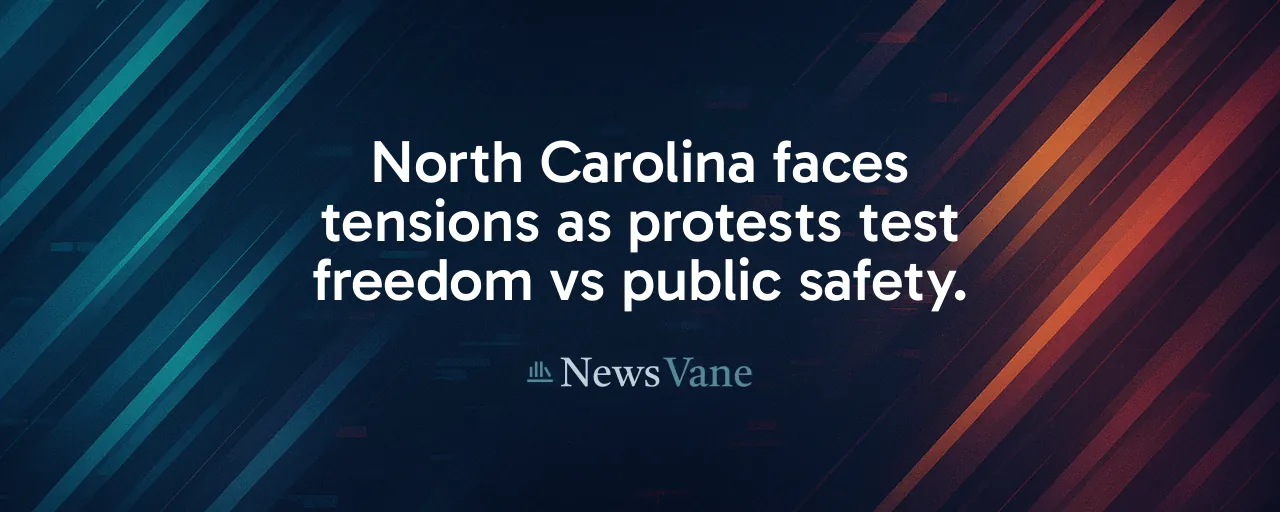A State on Edge
North Carolina is gearing up for a weekend of protests that could draw thousands to its streets. On Friday, Governor Josh Stein issued a statement affirming the right to peaceful assembly while urging calm to protect lives and property. His words arrive as the nation grapples with deep divisions over issues like economic fairness and government authority. The challenge is clear: uphold a fundamental democratic freedom while ensuring communities remain safe. Stein's message captures the delicate balance public officials face in these turbulent times.
Protests have long driven change in America. The civil rights movement's marches and the 2017 Women's March reshaped laws and public views. Yet, these events often carry risks, from property damage to violent clashes. In North Carolina, Stein's team is working with state and local agencies to prepare for any outcome, aiming to avoid the unrest that has marked other cities. The goal is to let voices be heard without letting chaos take over.
The Law's Evolving Role
The First Amendment protects the right to protest, but recent legal changes have reshaped how it's exercised. In May 2025, the Supreme Court's unanimous Barnes v. Felix ruling expanded options for suing police over excessive force, requiring courts to examine the full context of encounters. This decision may empower demonstrators by increasing accountability. At the same time, states like Wisconsin are pushing laws that broaden the term 'riot,' attaching felony penalties to disruptive acts. Similar measures in Florida and Missouri aim to curb violence but spark concerns about limiting free expression.
Federal policies are also in flux. After federal forces cleared protesters from Lafayette Square in 2020, a 2022 settlement mandated clear dispersal warnings and visible officer IDs. In contrast, a California judge on June 12, 2025, halted President Trump's bid to federalize the National Guard for protests, arguing it overstepped constitutional bounds. That ruling, now on appeal, underscores the ongoing struggle to balance assembly rights with government authority.
Diverse Views on Order and Freedom
Some leaders emphasize robust policing to maintain order. Texas Governor Greg Abbott, for instance, sent thousands of troops to recent protests, citing $2 billion in property losses from 2020 unrest. Supporters of this approach argue that swift action, like curfews or arrests, protects businesses and public safety. In Florida, officials have proposed shielding drivers who hit protesters blocking roads, framing it as a response to threats.
On the other hand, civil-liberties groups contend that aggressive tactics stifle dissent. Organizations like the ACLU stress that protests, even when disruptive, are vital to democracy. Data shows police often use force more heavily at racial-justice rallies, fueling calls for reforms such as banning tear gas or scaling back military-style gear. Both perspectives highlight the high stakes when protests escalate, with safety and freedom hanging in the balance.
Polarization's Impact
Deep political divides are reshaping protests. Research indicates that partisan tensions now rival issue-based grievances as a reason people take to the streets. In cities with stark polarization, demonstrations are more common, and the potential for conflict grows. Recent anti-ICE protests in Los Angeles revealed competing narratives: one side saw resistance to overreach, the other a challenge to law enforcement. Heavy police responses can tilt public support toward protesters, while violence by demonstrators often bolsters demands for stricter control.
Digital platforms intensify these dynamics. Organizers use tools like X to rally crowds quickly, but online spaces also spread divisive rhetoric. The 2025 'No Kings' protests, set to span 2,000 locations, were largely coordinated online. This digital reach complicates efforts to anticipate crowd behavior, making it harder for authorities to ensure safety without curbing free speech.
A Path Forward
As North Carolina awaits this weekend's events, Governor Stein's plea for nonviolence echoes a broader desire for constructive dialogue. History proves that peaceful protests, like the Montgomery bus boycott or 2020's racial-justice marches, can transform society. Yet, a single misstep, whether a protester's act or an officer's reaction, can spiral into disorder. The state's preparation reflects a hope that clarity and restraint will prevail.
Innovative approaches, like Columbus, Ohio's 'dialogue policing,' where officers engage protesters to ease tensions, could guide North Carolina. Courts will also play a role, refining the boundaries of free speech and public safety. For now, residents are watching, hoping their communities emerge united rather than fractured by the weekend's events.
The outcome in North Carolina will resonate nationwide. It's a moment to test whether the nation can protect its commitment to free expression while safeguarding its people. The resolution depends on the actions of marchers, leaders, and onlookers, all navigating a complex and deeply human challenge.
